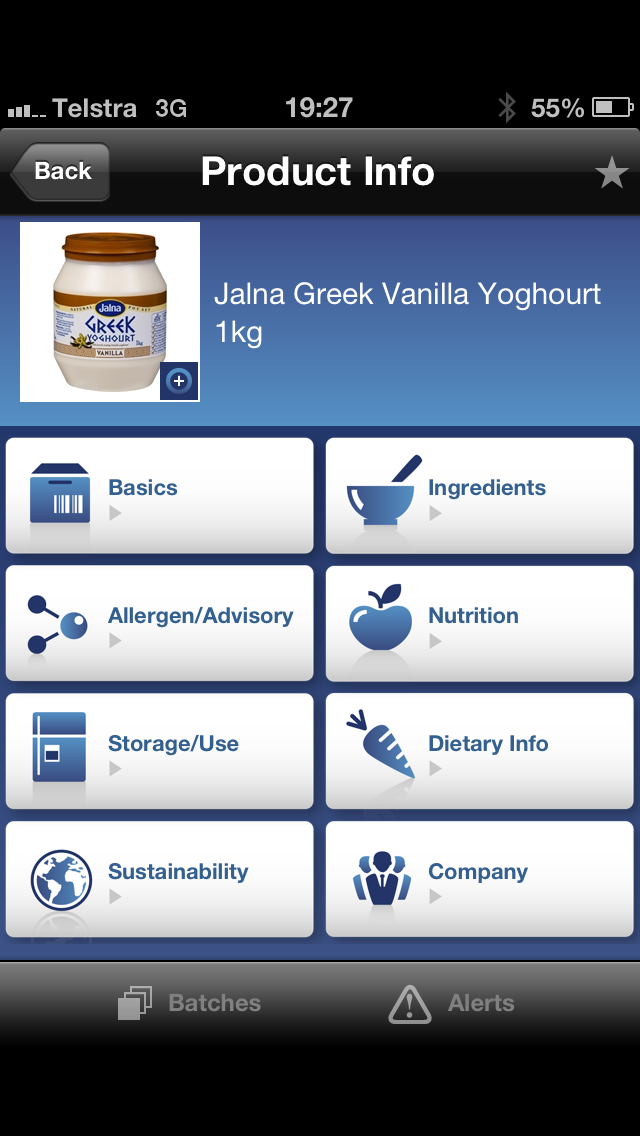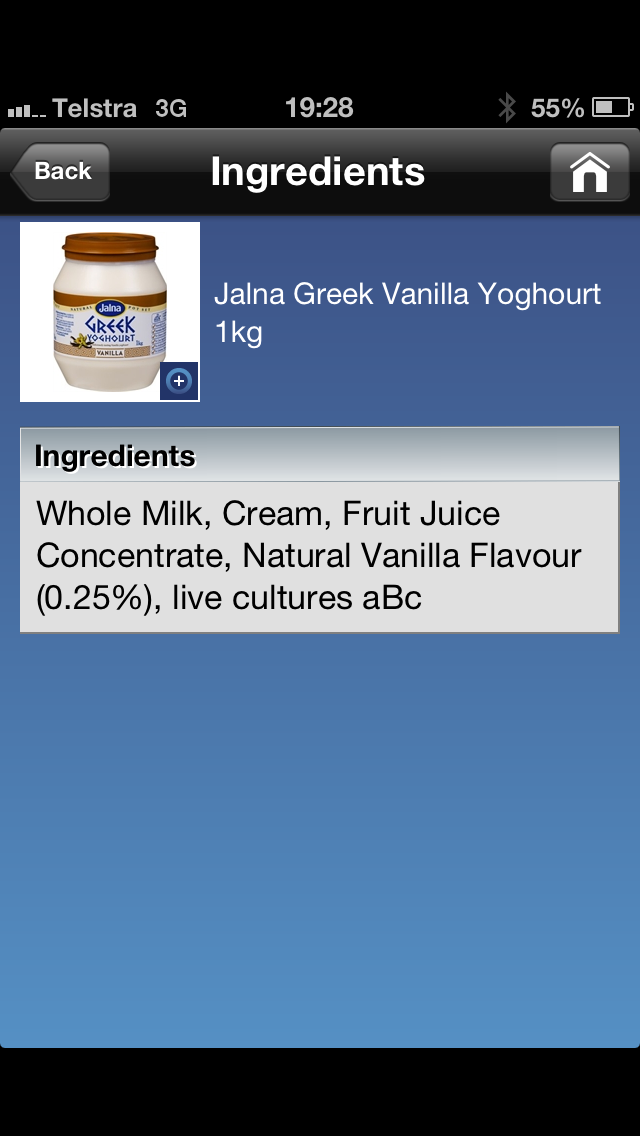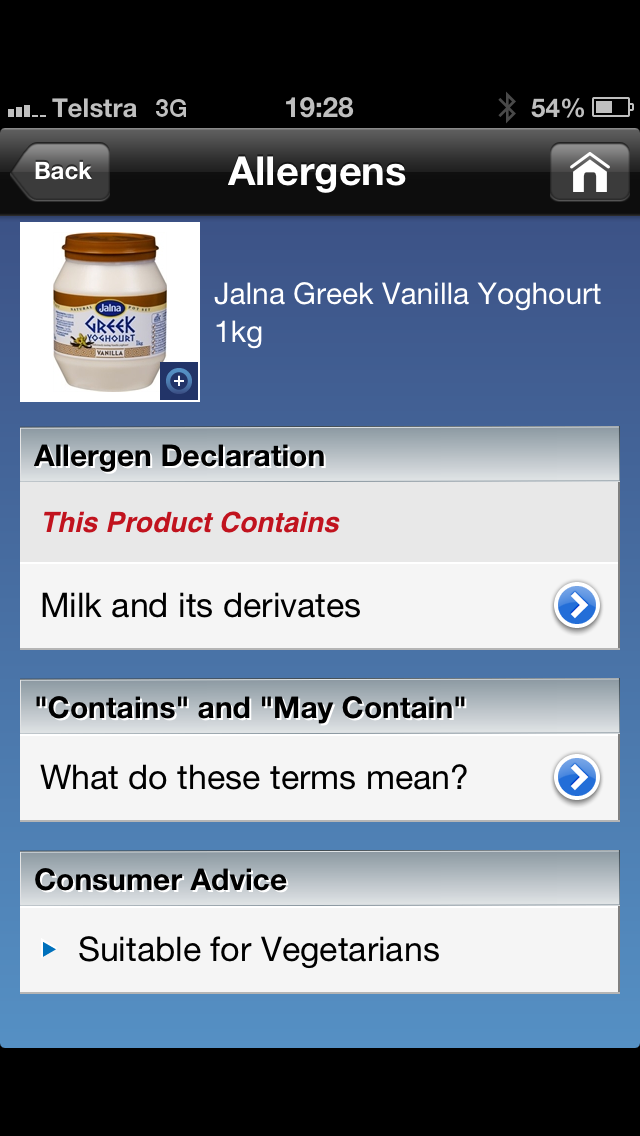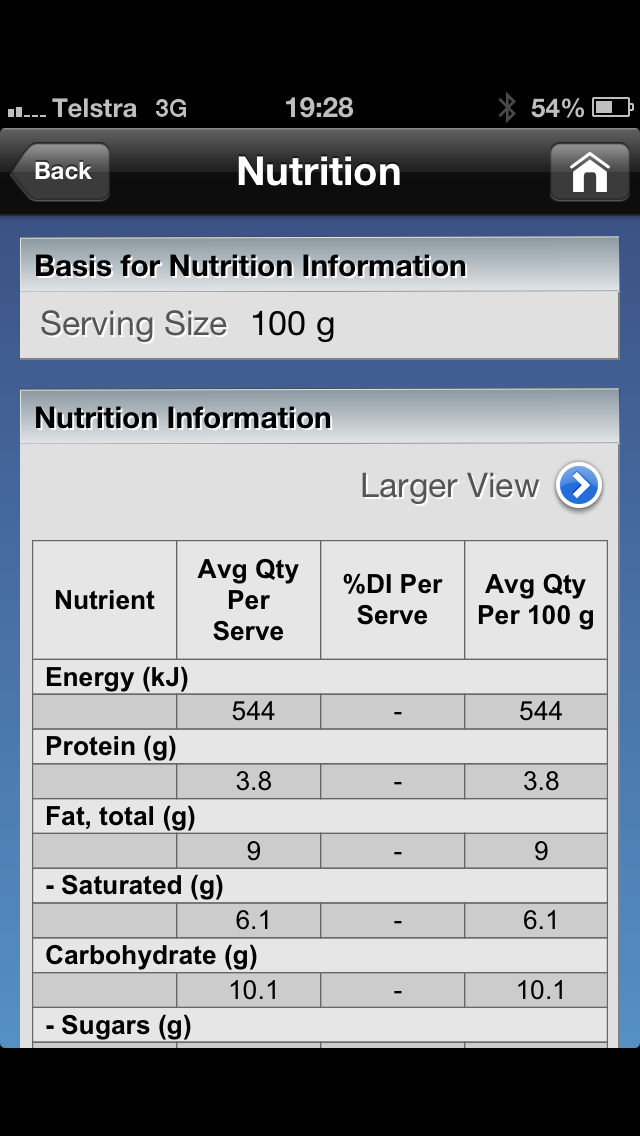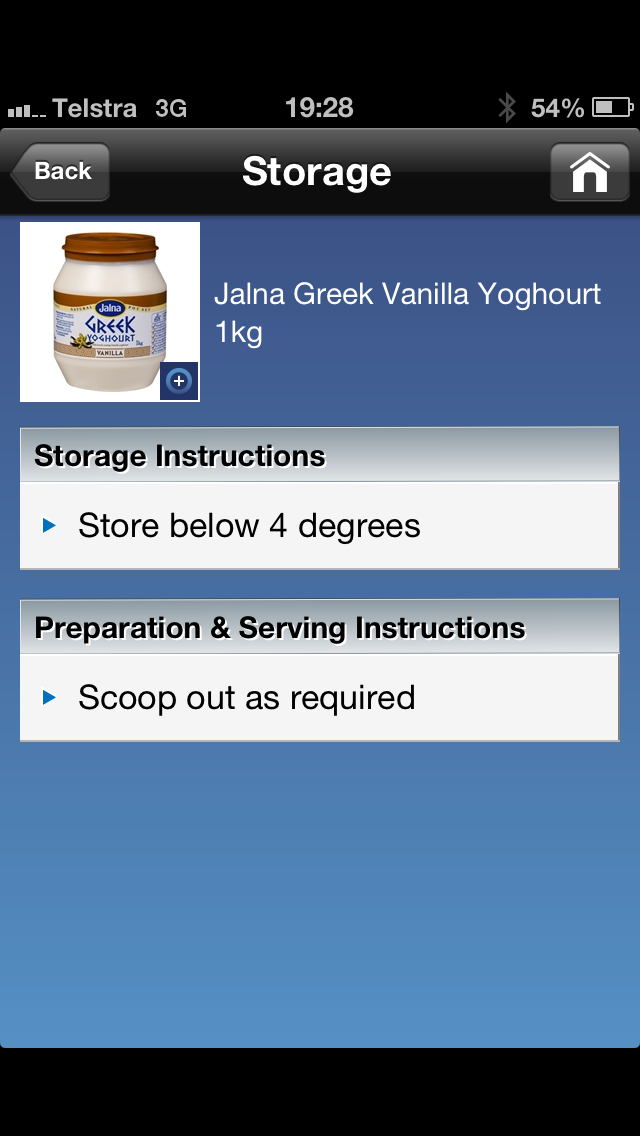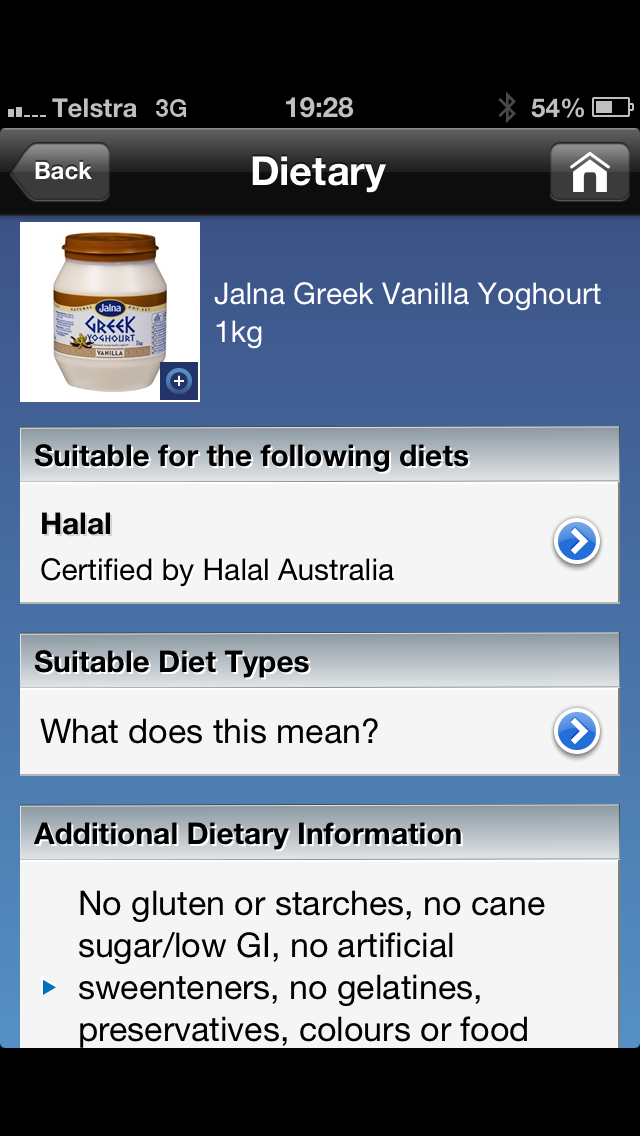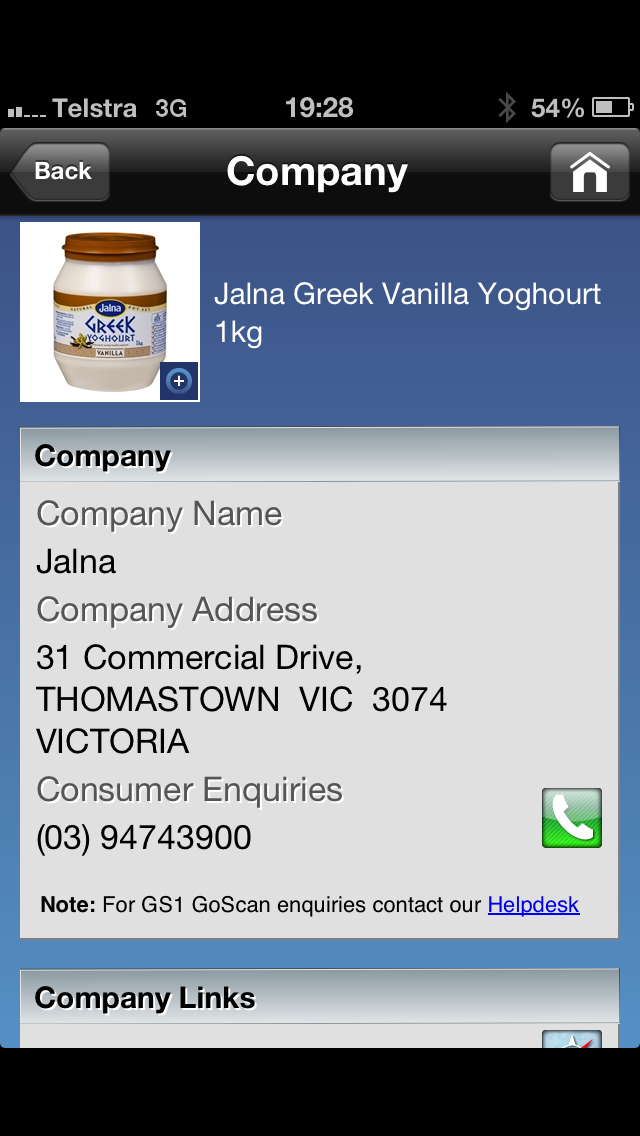Product Review: Go Scan App
Written by Catherine Saxelby
on Monday, 25 March 2013.
Tagged: allergies, Calories, FSANZ, guides, kilojoules, nutrition, review, standard serves, technology

I’ve been waiting for the launch of Go Scan for months now, having caught wind of its pending development via occasional whispers on the industry grapevine. So it was great to be invited to the official launch of this new App and get to play around with it for a review here. This is a first for Australia and one I’ll be using from now on.
I like it because it’s the only application uses data directly from manufacturers and brand owners so there’s no errors created by manual data entry and it’s exactly the same info that you see on the label. In short, it saves me a trip to the supermarket to check the list of ingredients or the nutrition panel or the allergens present.
Here’s how it works
- You download the App for free from the iTunes store to your iPhone or iPad.
- Then you simply scan any bar code on a food label OR enter the bar code numbers by hand.
- Or you can browse their pre-entered data by the product description, brand or category.
- Instantly you have all the info that you would get from the pack – nutrition figures, dietary claims, allergens, address of the manufacturer, website or Facebook page or Twitter handle of the manufacturer. Heaps of product information.
Starting out
When I selected Jalna Greek Vanilla yoghurt, I got a choice of 8 categories which you can see in the screen shot at left.
1. Basics
The first category the Basics gave you a description of the product, with a tiny little picture of the tub, weight, Country of origin (Australia) and links to their two websites – one aobut the product, one for recipes.
The app provides information directly from the manufacturers and brand owners and will be continuously updated – you are getting accurate info based on the exact batch number.
Or if they re-formulate, their data should be automatically updated on the App, a key issue for me as books and other Apps get out of date quickly.
2. List of ingredients
I was able to review the complete list of ingredients which was whole milk, cream, fruit juice concentrate, natural vanilla flavour 0.25%, live cultures ABC. All good.
Even though I'm primarily interested in the nutrition numbers, I still like to check out the ingredients present, looking for where added sugar is, what if any additives are there, especially colours and preservatives and what the percentage of key ingredients are.
This App will save me having to go to the supermarket to find all this! The GO Scan website says there'll be Genetically Modified (GM) and irradiation declarations in the future.
3. Allergens/Advisory
I looked at the declared allergens which was only milk in the case of this yoghurt. Click on "Milk and its derivatives" and you'll open up a short explanation of cow's milk allergy with a detailed list of ingredients to avoid such as casein or lactalbumin.
Plus it gives you an explanation of the "Contains" and "May contain" statements which are very confusing. And the App says it's ok for Vegetarians to eat – but I presume not for Vegans.
4. Nutrition numbers
Here I got the yoghurt's standard nutritional content per 100 grams and Per serve (which is spelled out – in this case it's a 100g or 3oz which is about half a cup).
Good that you could view this in a larger font which is handy for older folk or anyone who needs to wear glasses when shopping (which is me!).
I was disappointed to find that the serving sizes for all dairy weren't defined. Serve sizes are a real problem as I've discussed before. They just told me that the serve was 100 g which is too small for yoghurt. I would have so like to see nutrition figures for the usual 200 g or 180 g tub size.
Checked the confectionery and it gave small serve sizes eg 40 g or 55 g for chocolate bars. Bread figures were given per slice with the weight eg 70 g, as were cereals eg 30 g so maybe it's just the Jalna yoghurts.
5. Storage
There were clear instructions on how to store or prepare the product. For example, the Jalna yoghurt had to be stored below 4 degrees to maintain its life – this is the temperature of your fridge.
6. Dietary info
I could see whether the product is suitable for Halal or Kosher or Vegan or Vegetarian or Organic diets. Initially this sounded great but was very limited in its scope.
I would have liked this list expanded to included Salt-free and Gluten-free diets as well as Low GI or Diabetic ratings, and perhaps things approved by the Heart Foundation Tick or School Canteen Guidelines. Maybe these classifications will come in Version 2 in the future?
7. Sustainability
There was no info as yet here but a long note to say GS1 is compiling packaging and recycling information with resource consumption, emissions, ethical stuff etc. In the meantime they explain the recycling symbols for plastics, cardboard and steel from Plant Ark. Good luck – think this will be in the too-hard basket.
8. Company
I was offered the Jalna address in Thomastown Victoria, their Consumer telephone number (always useful) plus the Jalna website at m.jalna.com.au and Facebook page. All good.
The bottom line - my rating 9 out of 10
Go Scan is a handy App for me as a dietitian but also for anyone with any special dietary problems. Really anyone who has to check food labels. I urge all manufacturers to get behind this initiative and upload their label figures. At this point, there's only 4,000 products and some product images are missing, while some of the figures are still to come (the average supermarket stocks 20,000 products). But once it's up and running, Go Scan will be a formidable force for dietitians and allergy sufferers alike.
Who is GS1?
GS1 Australia is a not-for-profit organisation that implements bar codes on packs and barcode scanners at checkouts. It has developed the Go Scan App over the past three years in consultation with more than 70 retailers and food companies as well as the Australian Food & Grocery Council and national health organisations.
The Good Stuff
The Boring Stuff
© 2023 Foodwatch Australia. All rights reserved
Author photo by Kate Williams
Website by Joomstore eCommerce
